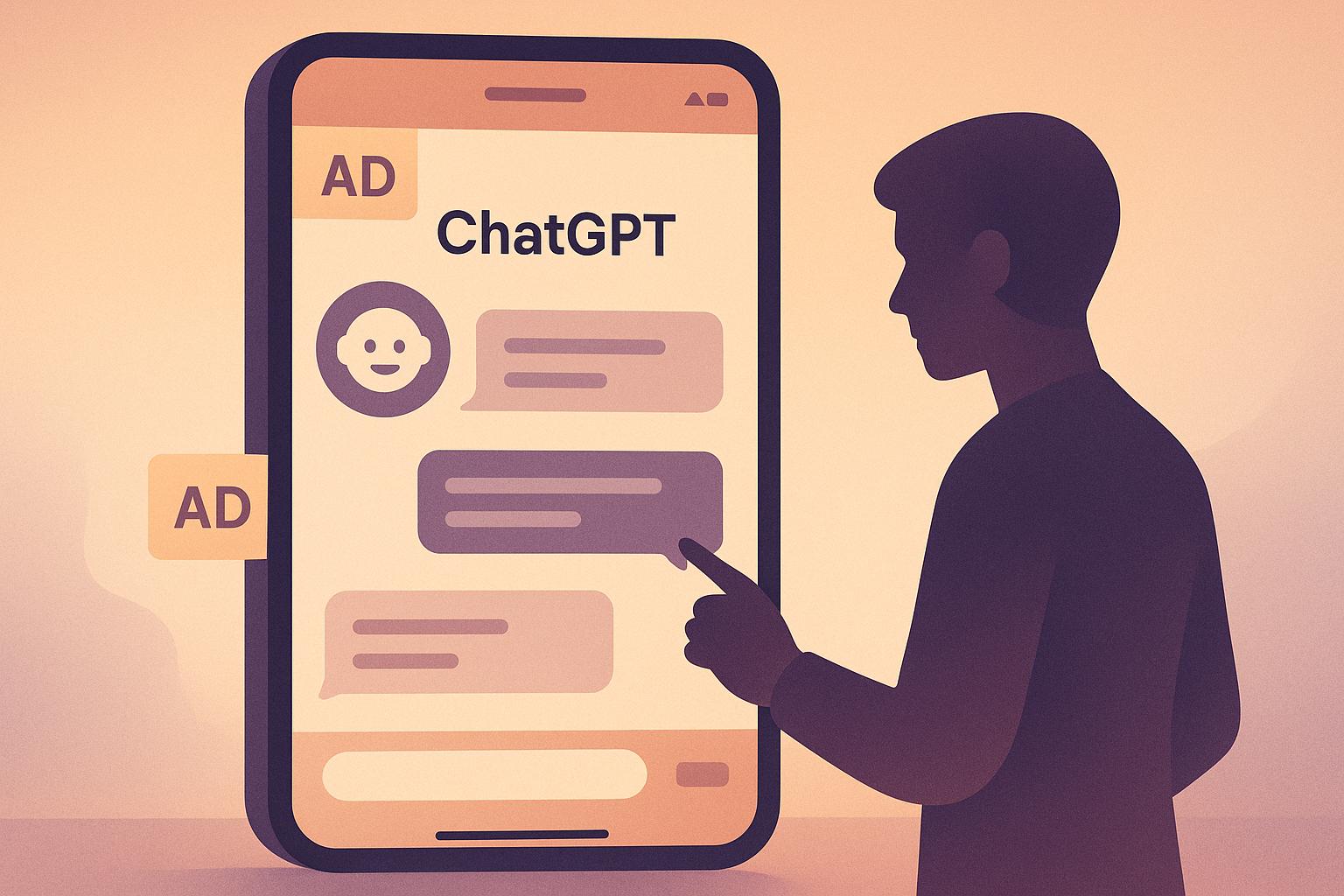


Learn effective strategies for creating developer-focused ad campaigns that resonate with technical audiences and drive engagement.
Developers are hard to reach with ads - 78% use ad blockers, and they spend just 2.1 seconds deciding whether to engage. To succeed, focus on delivering technical, relevant, and precise content. Here's how:
- Understand Developer Personas: Tailor ads for beginners, specialists, or career changers. Use platforms like GitHub and Stack Overflow for better targeting.
- Choose Quality Platforms: Specialized platforms (e.g., GitHub, Stack Overflow) yield 3-5x higher engagement than general ones.
- Show Technical Knowledge: Ads with real code examples drive 68% more engagement.
- Target Based on Activity: Use GitHub contributions or IDE usage to refine targeting.
- Use Platform-Specific Ad Formats: Native ads styled for the platform get 8x better results.
- Track Developer-Specific Metrics: Measure API usage, documentation engagement, and community growth.
- Test Ads with Developers: Pre-launch testing ensures technical accuracy and credibility.
Quick Comparison:
| Practice | Key Benefit | Example Insight |
|---|---|---|
| Understand Personas | Better targeting | Specialists prefer API docs |
| Choose Quality Platforms | Higher engagement | GitHub ads see 40% CTR |
| Show Technical Knowledge | Builds trust | Real code boosts engagement 68% |
| Target Based on Activity | Precision targeting | Kubernetes users up 28% sign-ups |
| Use Platform-Specific Formats | Higher platform integration | Native GitHub ads cut CPA by 40% |
| Track Developer Metrics | Measures real impact | API calls under 27 mins |
| Test Ads with Developers | Ensures accuracy | CodePen previews reduce errors |
Respect developers' time and technical expertise to create ads that resonate. Let’s dive into the details.
1. Match Ads to Developer Types
Developers are a diverse group with varying needs, depending on their experience and career stage. To create effective ads, it’s essential to understand these differences and tailor your approach accordingly.
Key Developer Segments:
| Persona | Primary Needs | Effective Ad Content | Platform Focus |
|---|---|---|---|
| Early Beginners | Learning the basics | Tutorials, starter tools | LinkedIn Learning |
| Career Changers | Building credibility | Certifications, career tools | LinkedIn Learning |
| Focused Specialists | Improving technical skills | Advanced solutions, API docs | GitHub, Stack Overflow |
For example, developers who ask more than 10 Docker-related questions on Stack Overflow are 3x more likely to engage with container-related ads.
Strategies for Better Targeting:
- Use Relevant Signals: Combine data like GitHub repository activity, Stack Overflow tags, and package manager downloads (e.g., npm or PyPI) to refine your targeting.
- Leverage Platform Strengths: Ads for specialized tools like Kubernetes perform 35% better on GitHub compared to broader tech platforms.
- Align Ads with Intent: Baidu increased install rates by 10% by matching ads to search intent, such as promoting photo tools to users searching for image-related queries.
What to Avoid:
Developers decide quickly - ads get just 2.1 seconds of evaluation time. If your ad doesn’t match their persona or needs, it’s likely to be ignored. Campaigns that treat developers as a single group see a 58% drop in click-through rates (CTR).
A persona-focused strategy paired with the right platform can make all the difference. Up next, we’ll dive into how platform selection plays a critical role in ad success.
2. Choose Quality Platforms Over Size
After defining your target personas, the next step is selecting the right platforms. Instead of chasing large audiences, focus on platforms that align with developers' habits. Why? Developers often use ad blockers and prefer tools that fit seamlessly into their workflows. Research shows that platforms tailored to developers deliver 3-5x higher engagement rates compared to general advertising options like social media.
Platform Performance Comparison:
| Metric | Specialized | General |
|---|---|---|
| Click-Through Rate | 0.5-1.5% | 0.05-0.15% |
| Conversion Rate | 8-12% | 1-3% |
| Cost Per Lead | $18-35 | $50-75 |
Best Developer Platforms for Ads
Certain platforms stand out for their ability to connect with developers in meaningful ways:
- GitHub Sponsorships: Ads placed in active workflows can achieve an impressive 40% CTR when developers are managing code.
- Stack Overflow: Ads on targeted Q&A pages generate 25% higher conversion rates for developer tools.
- EthicalAds: Contextual ads on tech blogs deliver a 0.8-1.2% CTR, far exceeding the industry average of 0.05% for display ads.
Each platform brings unique strengths:
- GitHub: Ideal for promoting tools integrated directly into development workflows.
- Stack Overflow: Best for solution-focused ads that address specific problems.
- daily.dev: Allows targeting by programming language or developer seniority.
3. Show Technical Knowledge in Ads
After selecting developer-focused platforms (as discussed in Practice #2), your ads need to showcase technical expertise to overcome skepticism. Research shows that ads highlighting a strong technical understanding see 68% higher engagement rates from developer audiences. This ties back to the earlier point that technical content can drive 50% higher click-through rates (CTR).
Code-First Approach
Instead of relying on vague marketing promises, New Relic increased engagement by 62% simply by displaying actual query syntax in their ads. This kind of direct, technical messaging consistently outperforms generic marketing language.
Structuring Technical Content
To make your technical ads resonate, organize the content thoughtfully:
- Highlight the Core Value: Example: "Reduce Docker build times 40% with parallelized layer caching."
- Provide Validation: Include snippets like Terraform configurations, which have been shown to boost conversions by 40%.
- Add Depth: Link to resources such as API documentation, which can increase dwell time by over 90 seconds.
Avoid Common Mistakes
To maintain credibility, steer clear of these errors:
- Using outdated versions of frameworks in your examples.
- Displaying overly simplified code that wouldn’t work in real-world scenarios.
- Making compatibility claims without specifying the environment.
"Developers smell marketing fluff from miles away - speak their language with precise technical details or risk being ignored." - EthicalAds.io Developer Advertising Guide
For added trust, include access to live demo environments via your ad's call-to-action (CTA). This strategy helped New Relic achieve higher engagement rates while maintaining credibility in developer-focused campaigns.
4. Target Based on Coding Activity
Focusing on developers' actual coding habits - like their repository contributions or the extensions they use in their IDEs - can boost click-through rates (CTR) by 50% compared to more generic methods. For example, DigitalOcean saw a 28% increase in sign-ups by targeting GitHub users actively working with Kubernetes.
Key Targeting Data
| Source | Targeting Opportunity |
|---|---|
| GitHub | Contributions to repositories & language trends |
| IDEs | Active extensions & usage patterns |
Proven Strategies
To get the most out of targeting, combine different activity signals for a more precise approach:
- Primary Language Usage: Focus on developers' preferred programming languages.
- Tool Adoption Trends: Monitor shifts in tools, like when developers switch IDEs or start using new frameworks.
Balancing Privacy and Precision
This method respects developers' preference for genuine interactions while still offering accurate targeting.
Staying Up to Date
Update activity data every 72 hours to keep pace with developers' changing interests.
As noted in Practice #2, daily.dev's advanced targeting tools allow advertisers to connect with developers based on their expertise with specific technologies. This ensures ads are seen by the right audience within their network of over 1 million developers.
Now that targeting is refined, the next step is to tailor ad formats for each platform's specific environment.
sbb-itb-e54ba74
5. Use Platform-Specific Ad Formats
Choosing the right ad format for each platform can make a huge difference in engagement. For instance, native ads targeting developers have been shown to deliver 8x higher click-through rates compared to traditional display ads. The best-performing formats depend on the platform, as outlined below:
Format Optimization by Platform
| Platform | Best Format | Key Performance Metric |
|---|---|---|
| GitHub | Contextual banners styled like code comparisons | Higher engagement |
| daily.dev | Native promotions styled as articles | 40% engagement rate |
| Stack Overflow | Text-based ads with embedded code blocks | 15%+ solution acceptance |
How to Integrate Ads Seamlessly
Ads that blend into the platform’s native environment tend to perform better. JetBrains nailed this with interactive ads mimicking an IDE interface:
"The interactive code snippet format increased our click-through rates by 47% and drove a 22% increase in IDE trial signups over 30 days."
To achieve this level of success, focus on technical integration. Here are some best practices:
- Utilize platform APIs for smoother ad functionality.
- Match the platform's UI, including options like dark mode.
- Opt for subtle, non-intrusive ad formats.
Avoid These Common Pitfalls
Certain ad formats can backfire with developer audiences. For example:
- Generic display ads on API documentation pages often lead to an 83% bounce rate.
- Failing to account for dark mode preferences results in 47% readability complaints.
Tips for Platform-Specific Designs
To further refine your approach, consider these ideas:
- Use collapsible code snippet previews for better usability.
- Try inline terminal-style banners that adjust seamlessly across devices.
These strategies are most effective when combined with developer-focused metrics, which we’ll dive into next.
6. Track Developer-Specific Metrics
Tracking metrics tailored to developers helps ensure your campaigns lead to meaningful technical interactions, not just surface-level engagement. While focusing on platform-specific formats can boost visibility (Practice #5), it’s these deeper metrics that reveal true success.
Key Metrics to Monitor
| Metric Type | What to Track | Target Benchmark |
|---|---|---|
| Product Usage | Time to First API Call | Less than 27 minutes for strong adoption |
| Technical Depth | Documentation Page Time | More than 4 minutes indicates quality engagement |
| Community Growth | Community Contributions | 15% month-over-month growth |
| Implementation | Active API Keys | 40% activation within 30 days |
| Developer Journey | SDK Downloads | 25% trial-to-install conversion rate |
Extended Attribution Windows
Developers often take their time to make decisions. For example, Stripe discovered that 35% of developer conversions happen after 45 days. This reflects their careful evaluation process. While developers may spend just 2.1 seconds on an ad (as noted in the Introduction), they require much longer to make significant decisions. Extending your attribution windows can help capture these delayed conversions.
Tracking Deep Engagement
Prioritize metrics that show meaningful interaction with your product. For instance:
"By optimizing our onboarding flow around Time to First API Call, we increased API integration rates by 27% and saw a 15% boost in long-term customer retention over six months."
This highlights the importance of focusing on metrics that reflect actual technical engagement.
Advanced Tracking Techniques
Here are a few methods to track deeper interactions:
- Track CLI installations using Google Analytics custom events.
- Monitor multi-session documentation usage to see how developers explore resources over time.
- Leverage tools like daily.dev for cohort retention analysis.
Focus on Quality Metrics
Instead of chasing high-level metrics like click-through rates, zero in on deeper signals of interest. For example, revisits to documentation or experimentation with your API often provide a better picture of genuine developer engagement. These detailed insights can refine both your targeting (Practice #4) and your technical content (Practice #3).
7. Test Ads with Developer Groups
Testing ads with developers helps catch technical errors that could hurt your credibility. This hands-on approach complements the metrics from Practice #6 and ensures your campaigns meet the high standards developers expect.
Structured Testing Framework
Building on Practice #3’s focus on technical accuracy, this step involves testing claims under real-world conditions before launch. Use a mix of methods across different campaign stages:
| Testing Phase | Method | Group Size | Focus Areas |
|---|---|---|---|
| Pre-Launch | Moderated Sessions | 5-7 per persona | Ensure technical accuracy |
| Beta | GitHub/GitLab Reviews | 10-15 active developers | Collect implementation feedback |
| Live Campaign | Weekly Sentiment Analysis | 50+ respondents | Fine-tune and optimize |
Developer-Centric Testing Tools
Leverage tools that fit seamlessly into developer workflows:
"By implementing CodePen-based ad previews during testing, we achieved an 18% higher technical comprehension rate and significantly reduced negative feedback about implementation examples."
Smart Incentivization
Offer practical incentives that resonate with developers:
- AWS credits (valued at $50-100)
- Premium IDE licenses
- Early access to new features or tools
Technical Accuracy Scoring
Evaluate ads based on what developers care about most:
| Criteria | Weight | Feedback Focus |
|---|---|---|
| Technical Accuracy | 40% | No syntax errors or outdated references |
| Value Proposition | 30% | Clear statement of technical benefits |
| Visual Integration | 20% | Compatibility with IDE themes |
| Call-to-Action | 10% | Developer-specific next steps |
Continuous Feedback Loop
Regular updates based on developer feedback can make a big difference. For example, bi-weekly creative refreshes informed by GitHub input increased engagement by 15%.
Budget Allocation
Set aside 15-20% of your budget for pre-launch testing to ensure your ads are polished and effective.
Common Testing Pitfalls
Avoid these issues that can lead to inaccurate results:
- Using hypothetical code instead of functional examples
- Testing during major tech conferences (when developers are busy)
- Overlooking dark mode compatibility
- Failing to disclose how data is collected during tests
Well-tested ads not only perform better but also align with platform-specific formats, which we’ll explore in the next section.
Platform Comparison
Once your ads are ready, choosing the right platform becomes the key to driving campaign success. But not all platforms perform equally when targeting developer audiences.
Core Platform Performance Metrics
Here's how some popular platforms stack up in terms of costs:
| Platform | CPM Range | Avg Conversion Cost |
|---|---|---|
| GitHub Ads | $12-$18 | $45-$60 |
| Stack Overflow | $8-$15 | $35-$50 |
| Google Dev Keywords | $6-$10 | $55-$75 |
| LinkedIn Tech | $15-$25 | $80-$120 |
Platform-Specific Targeting Capabilities
Some platforms provide advanced targeting options. For example, GitHub allows targeting based on repository activity, while VS Code leverages data from IDE usage patterns to narrow down your audience.
Format Effectiveness by Goal
The type of ad format you use can significantly impact your results. For instance, GitHub Action integration ads achieved a 40% lower cost-per-acquisition (CPA) compared to Google Ads when promoting DevOps tools.
"Prioritize platforms where your target developers solve actual problems vs passive browsing" - DeveloperMarketing.io
Emerging Platform Opportunities
Several up-and-coming platforms are gaining traction among developers:
- VS Code Marketplace: Growing 300% year-over-year.
- Replit Community: Boasts an 85% developer retention rate.
- Observable Notebooks: Focused on data visualization.
- Figma Dev Mode: Bridges design and code workflows.
Budget Allocation Strategy
A balanced budget allocation often follows the 50-30-20 rule:
| Allocation | Channel Type | Example Platforms |
|---|---|---|
| 50% | Established Platforms | GitHub, Stack Overflow |
| 30% | Specialized Communities | Dev.to, Hacker News |
| 20% | Experimental Formats | CLI ads, IDE integrations |
Performance Metrics to Track
When evaluating success, focus on developer-specific metrics like:
- Repository Engagement: Aim for 1 star or fork per 50 ad views.
- API Trial Signups: Target an 8-12% conversion rate.
Common Platform Selection Mistakes
Avoid these two common pitfalls:
- Format Mismatch: Using consumer-style video ads on developer tools like IDEs can lower engagement by 60%.
- Ignoring Platform Norms: Overlooking design elements like dark mode can slash conversion rates by 40%.
Platform Testing Cycles
Set aside 6-8 weeks to test new platforms and assess how developers respond. This ensures you gather enough data to make informed decisions.
Next Steps
Looking to kick off your developer-focused ad campaign? Here's a practical roadmap based on the seven advertising practices we covered earlier:
Build a Strong Technical Setup
| Component | Tool |
|---|---|
| Analytics | Google Analytics 4 (docs/API tracking) |
| Testing | Optimizely (for refining CTAs) |
| Heatmaps | Hotjar (to analyze landing pages) |
Start with High-Impact Actions
Prioritize these three steps to boost engagement by 25-50%:
- Understand Your Developer Persona: Align your campaign targeting and creative assets with developers' technical needs.
- Tailor to Each Platform: Follow platform-specific guidelines to ensure your campaigns resonate with developers (see Practice #5).
- Track Developer Engagement: Set up custom tracking for key actions like:
- API documentation views
- Code snippet copies
- Repository interactions
- Time spent on technical content
Refine Your Messaging for Developers
Make your copy resonate with a technical audience by shifting to code-focused language:
- Swap "Learn More" with "View API Documentation"
- Replace "Get Started" with "Clone Repository"
- Change "Sign Up" to "Start Free API Trial"
Weekly Metrics to Watch
Keep an eye on these metrics every week to fine-tune your campaign:
- API documentation views and code snippet usage
- Click-through rates (CTR) across platforms
- Cost per qualified developer lead
- Bounce rates on documentation pages






